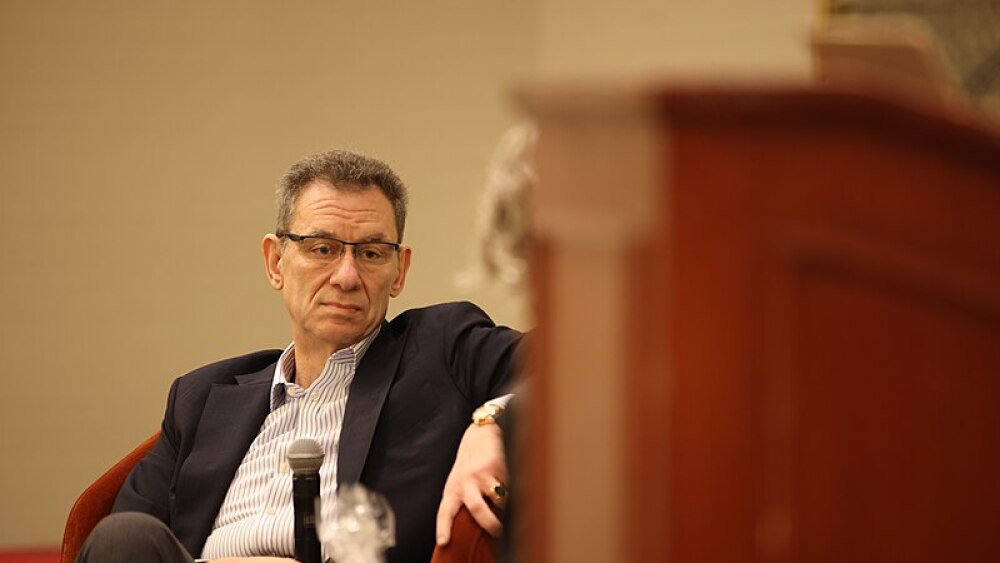BioMarin executives sought to calm an anxious investor base Wednesday with a public address and pledge to achieve a nearly 50% bump in annual revenue by 2027. But analysts were left wanting.
BioMarin’s year has been defined by rounds of layoffs, an executive restructuring and months-long soul searching on the future of hemophilia gene therapy Roctavian. On Wednesday, executives finally revealed the long-awaited full picture of what they have been building towards.
The company will restructure into three key units: skeletal conditions, enzyme therapies and Roctavian, all in an effort to unlock $4 billion in revenue by 2027.
BioMarin expects two FDA approvals by that year—and 11 launches by 2034. Also within the next decade, the company said it will have products in Phase III development across seven indications.
After 2027, the company expects mid-teen revenue growth to follow through 2034, with non-GAAP operating margins of 40% or more beginning in 2026 and $1.25 billion in operating cash flow in 2027 and beyond.
BioMarin reaffirmed its revenue guidance of $2.75 billion to $2.85 billion for fiscal year 2024.
CFO Brian Mueller said the $4 billion forecast does not include any mergers or acquisitions. Rather, one of the company’s existing products, Voxzogo, which was approved in 2021 for achondroplasia, will generate the bulk of the BioMarin’s forecasted $4 billion revenue. Specifically, the company plans to expand Voxzogo’s label in other growth disorders, following its October 2023 label expansion to achondroplasia patients of all ages with open growth platesin.
The projection is also not highly dependent on Roctavian, the gene therapy approved in June 2023 but which has failed to successfully launch. As of its second quarter earnings release last month, Roctavian had treated just five patients and generated $7 million in sales total, far below the expected $100 million to $200 million from Roctavian in 2023 alone.
BioMarin undertook a review of the program, putting a divestiture on the table as a possible option. But ultimately, the company decided to stick with it. Roctavian is the smallest business unit of the three outlined in the new plan. The company now expects to achieve profitability for the Roctavian business by the end of 2025 by reducing expenses to $60 million. During second quarter earnings, the company announced that sales of the gene therapy would be restricted to just the U.S., Germany and Italy, where it is reimbursed.
Analyst reaction to BioMarin’s ambitious new plan was mixed, with some relieved and even impressed by the outlook, while others felt there was too much focus on the approved medicines and not enough on the pipeline as well as the potential competition.
The pipeline discussion felt “cursory and left us wanting,” Truist Securities analysts wrote in a Thursday morning note. “What’s more critical for us and felt lacking during the event was strategy against key external events anticipated over the next 12-18 months that could impact the fate of BMRN more near-term and put post-2027 guidance at-risk.”
CEO Alexander Hardy, just nine months into the top job, acknowledged in his opening remarks that investors have been clamoring for more detail on the company’s future, promising to answer all the questions that have been swirling since Roctavian came under the microscope. But he emphasized the most important metric to him in all this is the goal of expanding by four times the number of patients treated by BioMarin medicines by 2034.
“I want to take this opportunity to reiterate again that our strong performance that we’re sharing today is really primarily based on our current products and our indications that we’re seeking, so our life cycle plans, and very little on molecules where we have not yet received the proof of concept data,” Hardy said. “And I think this is a really unique risk profile in the industry that we’re able to commit to high levels of growth with very low levels of scientific risk in that growth outlook.”
Many of the tough choices have already been implemented across BioMarin. Hardy said they have conducted a $500 million cost-reduction campaign, which included the deprioritzation of several early-stage assets. In the two weeks leading up to the investor day, BioMarin restructured its C-suite and laid off 225 people across global operations. In May, 170 employees lost their jobs.
Doing ‘Good Deals Really Well’
Hardy said repeatedly on this week’s call that while his team did not have to execute a deal, he said BioMarin was certainly open to the possibility of external innovation—that is, M&A—and he laid out a specific roadmap of what the company wants.
Hardy said the team will specifically be looking in the $1.5 billion range for assets or companies that fit into BioMarin’s “Core 5” values, which is used to assess internal innovation. Those values include genetically defined populations, targeted therapeutics, assessable endpoints, transformational impact and a commercially competitive profile.
BioMarin has $1 billion in cash to deploy and Hardy said there are many cash constrained small cap biotechs out there to consider.
“Very simply, I would say that we believe that there are assets out there that are worth more in our hands than where they’re sitting right now,” he said.
Key to this hunt for deals will be James Sabry, who will become chief business officer as of October 7. Hardy said Sabry has a track record of “over 1,500 deals done.” That, he said, “should give investors confidence that we’re going to do good deals really well.”
A deal could add a cherry on top of BioMarin’s forecast, Mueller explained.
“Our revenue targets are not dependent upon business development. However, the right deals over time can be additive to what is already a substantial level of growth,” he said. “Also the right deals over time can have a multiplying effect, diversifying and augmenting our portfolio.”
Mueller said that BioMarin will prioritize external innovation over returning capital to shareholders. The company and its board are regularly scanning opportunities for deals.
“For the near term, we believe that investing in long-term, sustainable revenue growth has the potential to deliver more value to shareholders than the outright return of capital,” he said.
Pipeline and Competition Get Short Shrift
BioMarin’s investor day had been a long wait for investors and analysts, who were quick to speak out on the company’s new plan.
“Operationally it’s impressive that under new management, BMRN can in just a few years attain competitive operating margins (>40%), driven by both expense discipline and better-than-expected revenues,” wrote Stifel’s analysts in a Wednesday afternoon note. The update was well above expectations, the firm said.
Stifel added, however, that BioMarin did not specifically define how the clinical pipeline or Voxzogo competition from other companies will play in the guidance. Ascendis Pharma and BridgeBio have therapies in development for achondroplasia.
BioMarin executives were confident that Voxzogo can face down the competition due to its market-leading position, patient experience and reluctance to switch treatments. Significant potential lies in hypochondroplasia, where BioMarin plans to target patients with the most severe disease, they said. Other label expansion opportunities include idiopathic short stature, Turner syndrome, Noonan syndrome and SHOX deficiency disorders.
Meanwhile, investors will be keenly watching for a Phase III readout for Ascendis’ TransCon CNP for achondroplasia; the release is expected in the coming weeks.
“This catalyst represents a swing factor for investors in their ability to get excited about the Vox bull case—and while TranCon’s a viable competitive threat (we actually believe more so than [BridgeBio’s] infigratinib at this stage), there’s clear trial risk here,” Stifel wrote.
Jefferies analysts said they believe that BioMarin’s new outline does not change much for investors who were already negative about the stock.
“If you didn’t like BMRN heading into investor day, will today’s event change your mind?” the firm wrote Wednesday afternoon. So far, Jefferies has heard “not really” from clients the analysts have spoken to. But Jefferies said that Hardy’s moves so far have been “rational and in line with what investors want to see from BioMarin.”
Whether it will all go to plan remains to be seen, of course. “A lot can happen in a decade, particularly in a hyper-innovative space such as biotech,” Truist analysts wrote, “and we hesitate to give much credit to pipeline programs without anticipated visibility more near-term.”






